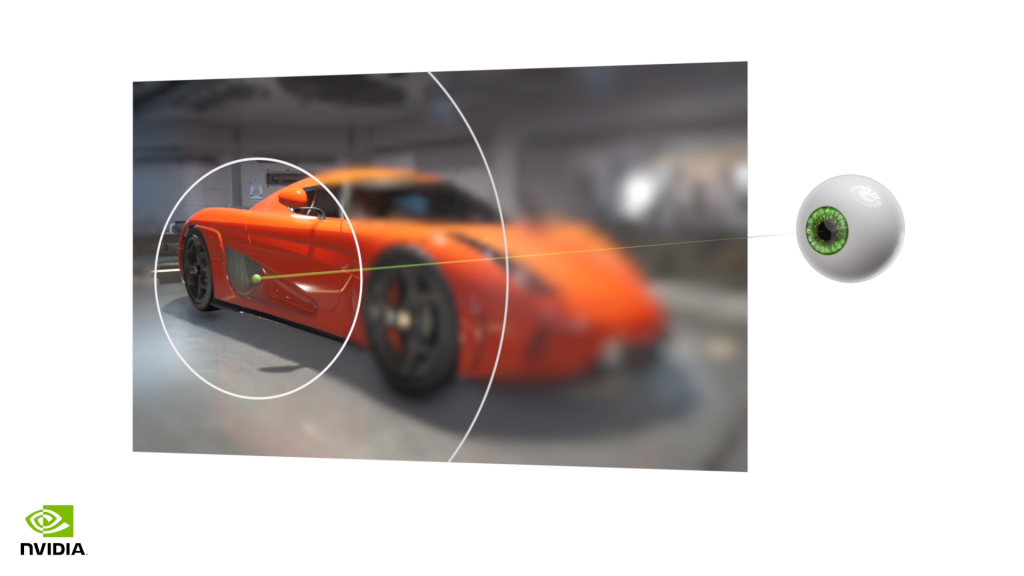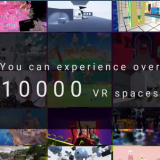In this article, I’ll introduce you to a guide to buying a gaming PC that’s perfect for getting started with VR.
For those who want a gaming PC but aren’t interested in building their own PC, or for those who don’t want the hassle of buying new PC parts, I’ll explain what kind of PC to buy with what budget, with the goal of keeping it stable for as long as possible.
- 1 Getting Started
- 2 Which is better, a desktop or a notebook?
- 3 Warning: VR is not compatible with OS other than Windows
- 4 Desktop Edition: Parts Guide
- 5 Desktop Edition: The CPU Situation
- 6 Desktops: The state of the GPU
- 7 Desktops: Recommended Models
- 8 Notebooks: The state of the CPU
- 9 Notebook Edition: The GPU Situation
- 10 Notebook Edition: Recommended Models
- 11 Common to desktops and notebooks: Memory
- 12 Pay attention to the PC terminals in VR
- 13 Recommended VR Headsets
- 14 Oculus Rift S
- 15 Oculus Quest
- 16 Valve Index
- 17 Conclusion
Getting Started
Many people who use STYLY have an interest in VR. If you want to start VR, you should use a gaming PC.
A gaming PC is designed for gamers, and it can improve the efficiency of all kinds of tasks compared to a regular PC. With a gaming PC, you will rarely have to worry about processing failures in Office software, image editing software, and 3DCG production software. If you want to buy time and comfort for money, a gaming PC is the perfect choice. It is not uncommon for inexpensive models of PCs for creators to have the same parts as gaming PCs.
In this article, we will focus on CPU and GPU to choose a gaming PC.
Which is better, a desktop or a notebook?
In my opinion, the first thing to consider when buying a gaming PC is to decide whether to buy a desktop or a notebook.
As a general rule, gaming laptops can be carried around, but they tend to break easily and have a short average lifespan of two to three years. Desktops, on the other hand, are heavy and take up a lot of space, but can be expected to last 4-5 years.
However, since it is unlikely that you will move your PC to play VR or take it outside to play VR, I would recommend a desktop for VR.
On the other hand, if you are a person who does creative work outside on a daily basis, or if you are thinking of exhibiting at an exhibition, a notebook PC may be a better choice. Choose carefully according to your individual needs.
Warning: VR is not compatible with OS other than Windows
If you are a creative person, you may be a MacOS user.
Of course, even high-end machines with MacOS are powerful enough, but basically, only Windows is officially supported by VR headsets.
As of February 2020, Steam has distributed 3272 VR software titles, but only 12 (0.37%) are compatible with Mac OS and only 7 (0.21%) with Linux. So, if you want to start VR, you should definitely get a Windows PC.
Desktop Edition: Parts Guide
BTO is popular for gaming PCs, where you can specify most of the parts if you order from a PC shop, but even gaming PCs with specified parts can be customized to some extent.
In this article, I will introduce how to choose a PC with reference to the PC store Dos Palla. We will also discuss CPU, GPU, and memory, which are important in selecting a gaming PC.
Desktop Edition: The CPU Situation
CPUs are made by Intel and AMD, and AMD’s CPUs tend to be cheaper in 2019-2020 because AMD is doing well.
For VR and gaming, you don’t need to worry about the CPU manufacturer, although some creative software (e.g. Adobe) has issues that are not optimized for AMD CPUs.
For the first half of 2020, AMD: Ryzen 7 3700X or Intel: Core i7 9700K is the basic standard.
Desktops: The state of the GPU
The GPU is the graphics performance part, and the most important part for VR is the GPU.
When choosing a PC for VR, it is important to choose a PC with a GPU that supports VRS (Variable Rate Shading).
VRS is a technology that reduces the load on the GPU by changing the resolution of the game image depending on the position of the display, and is an important feature that will be used in future VR devices (see NVIDIA’s official explanation of VRS).
Although there are few opportunities for VRS to be used in the first half of 2020, if you have a GPU that supports VRS, you will soon be able to enjoy high-quality VR with low load.
Currently, the only GPU that supports VRS is NVIDIA’s RTX 20XX (Turing) series, and AMD’s RDNA 2 GPU (name not yet announced) to be released at the end of 2020 will support VRS.
In addition, the recommended GPUs for popular VR games in the first half of 2020 (such as Boneworks and Half-Life: Alyx) are RTX 2060 Super and above. Therefore, in the first half of 2020, you can be sure to choose an RTX 2060 Super or higher GPU model.
Desktops: Recommended Models
For a desktop PC suitable for VR in 2020, referring to Dospara, we recommend the “Galleria AXV Galleria AXV“, which has a Ryzen 7 3700X CPU, RTX 2060 Super GPU, and 16GB of RAM for 171,578 yen including tax (*as of 2020/04/02).
Incidentally, for desktop PCs, the larger the chassis (PC case), the better the cooling function and the less likely the PC will break, so if you have enough room, choose the one with the larger PC case.
If you don’t care about 4K resolution, you will be able to play games on PS5/Xbox Sreies and other next-generation game consoles scheduled to be released by the end of 2020.
Notebooks: The state of the CPU
Intel’s Core i7-9750H is the mainstream CPU for gaming notebooks in the first half of 2020.
However, AMD’s Ryzen 4000 series CPUs are scheduled to be released in the first half of 2020, so there is a possibility that the Ryzen 7 4800H will become popular for gaming when it is released.
Notebook Edition: The GPU Situation
Notebooks tend to have slightly lower performance than desktop PCs, even if they use the same type of GPU.
In the desktop section, the recommended GPU is the RTX 2060 Super, but notebooks with the RTX 2060 Super are rarely seen, so it’s best to choose a model with the RTX 2070.
Also, as mentioned earlier, AMD has yet to release a GPU that supports VRS, so we don’t recommend choosing an AMD GPU for a gaming notebook designed for VR applications.
Notebook Edition: Recommended Models
For a notebook PC suitable for VR in 2020, referring to Dospara, we recommend the “Galleria GCR2070RGF Galleria GCR2070RGF“, with a Core i7-9750H CPU, RTX 2070 (8GB) GPU, and 16GB RAM for 186,978 yen including tax (as of 2020/04/02).
This level of specs is popular among gamers who don’t use VR, so check the sales website as they are often out of stock.
As a side note, some stores sell sets of gaming laptops that come with a VR headset (Vive Focus). However, I don’t recommend getting a VR headset of a minor model because you are likely to have trouble using it.
Common to desktops and notebooks: Memory
For VR and gaming, 16GB of memory is enough, but if you want to do image editing, video editing, game development, or VR content development, 32GB will be easier.
If you are using a desktop PC, you can buy more memory and install it in your PC, but if you are using a notebook PC, you may need to replace it or you may not be able to replace it in the first place. If you are unsure, increase the amount to 32GB when ordering.
Pay attention to the PC terminals in VR
The terminals of the cable that connects the VR device to the PC are important, although this is often not mentioned in the buying guides for buying a gaming PC.
A terminal is a place to plug in a cable to send video and audio, like an HDMI cable. Since the VR cable is not HDMI, it may happen that “there was no terminal for the VR cable to plug in after I bought the PC.
When buying a PC, make sure that it supports Display Port (mini Display Port) in the video output section of the product specifications.
In addition to VR, many 4K monitors also have Display Port terminals. If you plan to use a 4K monitor and VR together, pay attention to the number of Display Port terminals. Some manufacturers offer models with Display Port terminals on the front of the PC for VR.
Recommended VR Headsets
The price range for VR headsets varies depending on the application, ranging from 50,000 yen for a simple headset to more than 100,000 yen for a high-end headset.
For the first half of 2020, the cheaper one will be Oculus and the more expensive one will be Valve. Unfortunately, all VR devices will be in short supply in the first half of 2020 due to the coronavirus, so it is important to keep checking the stock.
Note that Oculus can only be ordered in Japan from the official Oculus website or Amazon. Please be careful not to buy from Amazon resellers at unreasonably high prices.
Oculus Rift S
Oculus Rift S (official website) is the most stable and cheapest VR device. The price is 4,9800 yen including tax (as of 2020/04/02), but depending on the time of year, it may be discounted by a few thousand yen.
Oculus Quest is often out of stock, but Rift S is still available, and Oculus has exclusive content.
Display Port or mini Display Port.
Oculus Quest
Oculus Quest (official website) is the most popular VR device in the first half of 2020.
The most attractive feature of Oculus Quest is that it can run on its own without a PC (or rather, the ability to connect to a PC was added later), but the terminal for connecting to a PC is complicated, and you need to use the officially recommended USB Type-C (10,200 yen including tax) or the officially recommended “Anker USB Type C Cable PowerLine You will need the officially recommended USB Type-C (10,200 yen including tax) or the officially recommended “Anker USB Type C Cable PowerLine USB-A 3.0 Cable (cable length of 3m or more recommended)“.
If you want to know more details, read the official Oculus guide or search for “Oculus Link” to see the blogs of volunteers.
Also, some PCs (especially laptops) may not support USB Type-C video output, so look carefully at the product features catalog.
The image quality and smoothness of the video is slightly lower than the Oculus Rift S, but it has the appeal of a portable VR device.
Click here for instructions on how to use STYLY with Oculus Quest.
Valve Index
Valve Index (official website) is a high-end VR headset made by Valve, the operator of Steam.
It features one of the highest resolution and frame rate (smoothness of the image) of any VR device, and a controller that can sense the movement of all fingers on both hands, but in return it is expensive at 130,000 yen for the full set (as of 2020/04/02).
Currently, there are only a few titles that are officially compatible with the Valve Index controller, but many notable and popular titles are becoming compatible with it.
Also, if you buy more sensors (trackers), you can do motion tracking (sensing of human form like VTuber) with sensors on your arms and waist. Now it comes with Valve’s new VR game “Half-Life: Alyx” as a purchase bonus.
The terminal is Display Port, and can be purchased in stores such as PC stores or ordered from the official website (Degica).
Click here for instructions on how to use STYLY with Valve.
Conclusion
Although you don’t necessarily have to choose a PC as described in this article, I have described the specifications from the perspective of CPU and GPU, assuming that people who are not interested in building their own PC or are not motivated to maintain their PC to the extent of replacing parts by themselves can use VR with satisfaction for at least four years.
The hurdle and cost of starting VR on a PC is still high, as the purchase cost of a PC is approximately 150,000-200,000 yen, and the purchase of a VR device is expected to be at least 50,000 yen.
Therefore, you should choose a gaming PC carefully according to your budget. If you have a friend or acquaintance who is familiar with PCs, please ask them for advice.


